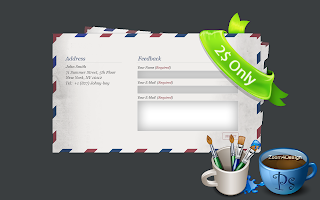Trying to find the exact answers to your web design questions can be frustrating. There is be a lot of content that exists, but possibly nothing you are able to make use of. Use the advice you find below, and you’ll be happy you did.
Use fixed-position navigation. This means you need to lock the site’s panel for navigation in a place that scrolls while the visitor does. This is easy for the visitor and good for marketers.
Don’t overuse graphics. Some images are necessary. However, too many are overwhelming. Graphics should improve your site, not just pretty it up. Your site will be much more usable and user friendly when you minimize the use of graphics.
Design web pages to not take up too much space. Not every person using Internet has a high-speed connection, so if a site takes longer to load, they won’t be as interested in it. You don’t want people to have to abandon your site because the pages won’t load.
Create an easily scannable website. Through usability tests, it has been determined that many readers online do not read all content. Normally, most are just scanning for interesting parts. Break text into sections with headers that can be scanned easily by your readers. Also, make sure to keep the most important information at the top. This can help you make sure your visitors have a better experience since they can easily find what they’re looking for.
Design your page so that previously entered information is saved and automatically used to fill in informational boxes. For instance, if a visitor registers for your newsletter and they are going to use the same information to make a purchase, be sure the data they’ve already entered is kept, so they do not have to re-enter the same information. If you use this data to your advantage, users will be able to save time as they navigate your site.
Do not use pop-ups. Many consumers are bothered when they visit a site and are suddenly bombarded by pop-ups. Many visitors to a site will just click away from a site with pop-ups, even if the site is a popular one. In addition, many people now have pop-up blockers anyway. Stay away from those irritating ads and your visitors will be pleased. Any host which requires you to have pop-up ads is a host you don’t want to use!
Use some pictures on your site to make your site attractive. Pictures on your website can provide a friendlier approach to visitors. Those pictures can lead to a lot more post views per visitor.
When creating a website, it is important that you limit the amount of fonts you use. Also consider how the fonts look on a regular screen. Small serif fonts are harder to read. Fancy fonts may look attractive at a glance, but a closer look reveals they can be extremely annoying to read.
White is the most common background color online for a reason. Having a white background tends to make the website easier to view and read and it also gives it a professional look that makes it appear more trustworthy. When there is a more complicated design in the background, it can be very distracting, and make your website look less professional. You will find that simpler backgrounds are better.
If you already have several ideas for websites, you should reserve your domain as soon as possible. Get creative and choose something you want, but reserve the name early to ensure you have it. You never know when someone else is thinking about the same name and type of website as you. You would think we all read each others minds.
Text Editor
Whilst development platforms can be helpful as they create your web code for you, some of them can be very unreliable, and you may actually find using a generic text editor is a better option. What a platform does is help you paste the code onto features that you have made. But if you want to cut back on the errors and get real hands-on experience, a classic text editor is the way to go.
The tips outlined here can help you design the website of your dreams. Thankfully, this site has taught you useable information on web page design. You are certain to appreciate how these suggestions benefit your site.

